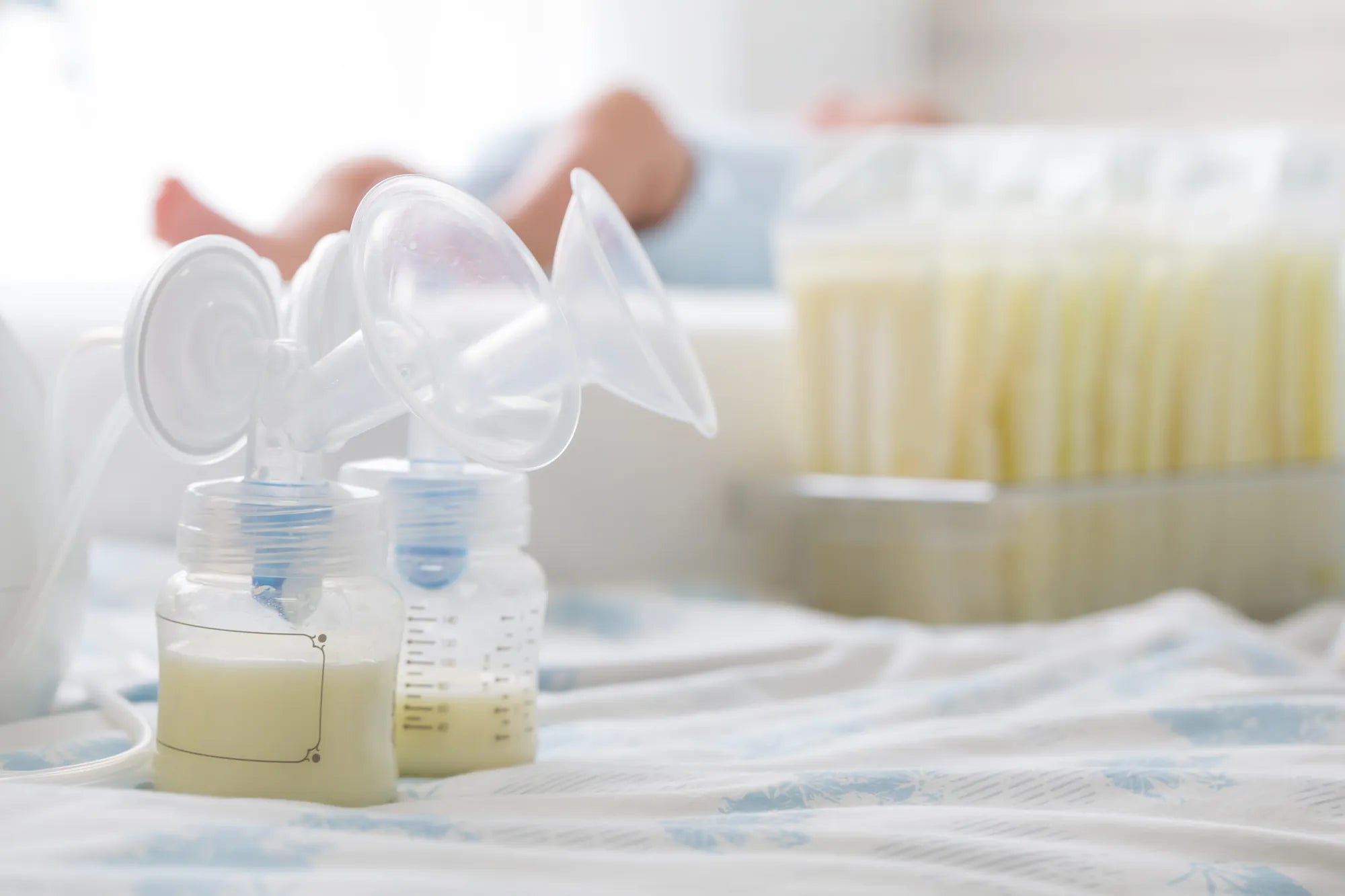Inicio
Pregnancy, Breastfeeding, and Pumping: The Ultimate Guide for Moms
When to Change My Elvie Breast Pump Parts: A Complete Guide

When to Change My Elvie Breast Pump Parts: A Complete Guide
Breastfeeding is a beautiful journey, but it comes with its own set of challenges. One of the most critical tools in this journey is your breast pump. Ensuring that your breast pump is in top condition is vital for both your comfort and your baby's health. This guide will walk you through when and why you should change your breast pump parts, helping you maintain a seamless breastfeeding experience.
Why Regular Replacement of Breast Pump Parts is Essential
Breast pump parts are subject to wear and tear over time. Regular use can lead to diminished performance, which can affect milk expression and overall efficiency. More importantly, worn-out parts can harbor bacteria, posing a risk to your baby's health. Replacing these parts at the right time ensures that your pump operates at its best and maintains a hygienic environment for your milk.
Signs That It's Time to Change Your Breast Pump Parts
Knowing when to replace your breast pump parts can be tricky. Here are some clear indicators that it's time for a change:
- Decreased Suction Power: If you notice a drop in suction strength, it could be due to worn-out valves or membranes.
- Visible Wear and Tear: Cracks, discoloration, or deformities in the parts are a clear sign they need replacing.
- Milk Leakage: Leaking milk during pumping sessions often indicates that the parts are no longer sealing properly.
- Unusual Noises: Strange sounds during operation can suggest that the parts are not functioning as they should.
- Hygiene Concerns: If you've sterilized the parts multiple times and they still don't feel clean, it's time for new ones.
Recommended Replacement Timelines
While signs of wear are a good indicator, following a general timeline can help you stay ahead of potential issues. Here are some guidelines:
- Valves and Membranes: These should be replaced every 4-6 weeks with regular use.
- Tubing: Inspect tubing monthly and replace if you notice any moisture or mold.
- Flanges: Replace every 6 months or if you notice any cracks or deformities.
- Bottles and Caps: These can last longer but should be replaced if they show signs of wear or damage.
How to Properly Maintain Your Breast Pump Parts
Proper maintenance can extend the life of your breast pump parts. Here are some tips:
- Regular Cleaning: Clean all parts after each use to prevent bacterial buildup.
- Proper Sterilization: Sterilize parts according to the manufacturer's guidelines to ensure they are safe for use.
- Storage: Store parts in a clean, dry place to prevent contamination.
- Inspection: Regularly inspect parts for any signs of wear or damage.
The Impact of Not Replacing Parts on Time
Failing to replace breast pump parts on time can have several negative consequences:
- Reduced Milk Supply: Worn-out parts can lead to inefficient pumping, reducing your milk supply over time.
- Health Risks: Old parts can harbor bacteria, increasing the risk of infections for both you and your baby.
- Increased Costs: Neglecting to replace parts can lead to more significant issues, requiring costly repairs or replacements of the entire pump.
How to Choose the Right Replacement Parts
When it's time to replace your breast pump parts, choosing the right ones is crucial. Here are some factors to consider:
- Compatibility: Ensure the parts are compatible with your specific breast pump model.
- Material: Opt for high-quality materials that are durable and safe for your baby.
- Reviews: Check user reviews to gauge the performance and reliability of the parts.
- Warranty: Look for parts that come with a warranty for added peace of mind.
Where to Purchase Replacement Parts
Finding the right place to buy replacement parts is essential. Here are some options:
- Manufacturer's Website: Purchasing directly from the manufacturer ensures compatibility and quality.
- Authorized Retailers: Buying from authorized retailers guarantees that you're getting genuine parts.
- Online Marketplaces: Reputable online marketplaces can offer a wide range of options, but be sure to verify the seller's credibility.
Common Mistakes to Avoid
When it comes to replacing breast pump parts, there are some common pitfalls to avoid:
- Delaying Replacement: Waiting too long to replace parts can lead to the issues mentioned earlier.
- Using Incompatible Parts: Using parts that are not compatible with your pump can cause damage and reduce efficiency.
- Neglecting Maintenance: Even with regular replacement, proper maintenance is crucial for the longevity of your pump.
Final Thoughts on Breast Pump Part Replacement
Replacing your breast pump parts at the right time is essential for maintaining a healthy and efficient breastfeeding routine. By paying attention to the signs of wear, following recommended timelines, and choosing the right parts, you can ensure that your breast pump continues to serve you well throughout your breastfeeding journey.
Taking care of your breast pump is just as important as taking care of yourself and your baby. Regular maintenance and timely replacement of parts will not only enhance your pumping experience but also ensure that your baby gets the best nutrition possible. So, don't wait for the signs to become obvious—stay proactive and keep your breast pump in top condition.
Compartir
